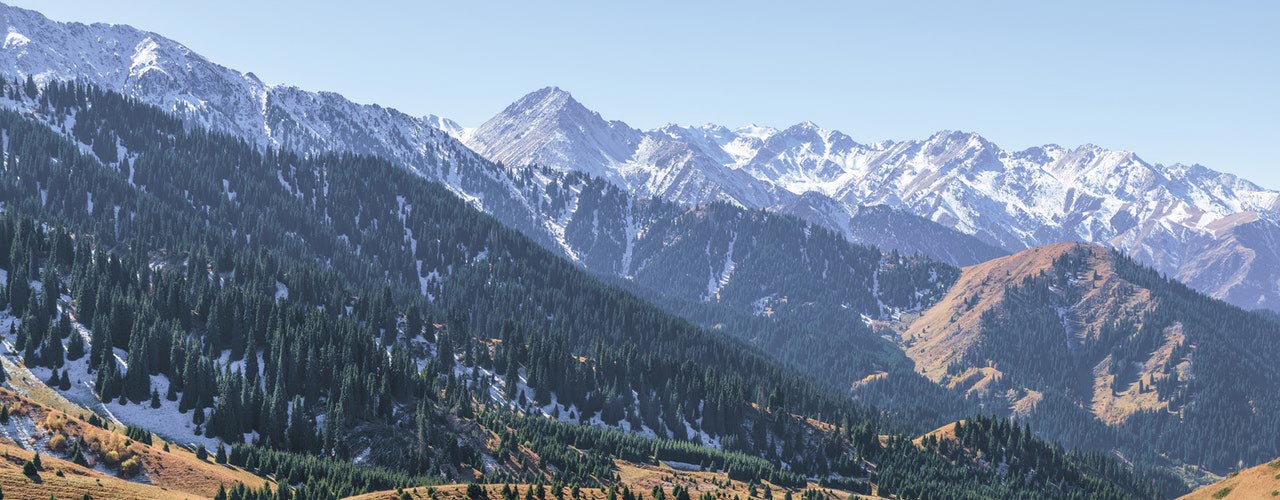Kazakhstan are the world leading exporters of flour and wheat, producing some 19mn tonnes per year, and top 10 grain exporters. The yield of wheat is high per hectare, and soil and productivity enhancements meaning the 8-9mn tonnes of wheat produced each year is of high protein quality. Afghanistan and Iran are the main consumers of grain from Kazakhstan, which opens markets in the Caspian Sea, although given the challenges of being a landlocked country, the focus is on exporting to other markets.
Grain market in Kazakhstan
With no access to sea routes, strategic alliances with Iran and China are giving it access to the Aral and Caspian Sea. The challenges of being a landlocked mass means there are increased costs of exporting to other markets.
The importance of the Kazakh – WTO Relationship
When Kazakhstan became a member of the WTO, it meant it didn’t have to pay duties and helped it increase its export of wheat to Asia. Central Asian countries are trying to implement their own policies so that they can buy wheat from Kazakhstan and produce grain internally which increases local employment.
Key Challenges of the Grain market in Kazakhstan
Double issuing and the avoidance of taxes / tariffs remains an issue when working with Afghanistan and Central Asia. Import taxes and special quotas also raise challenges in China.
It’s been suggested by the USDA that last year Kazakhstan imported $300mn tonnes of grains, of which only $100mn was legitimately done under quota rules.
Other challenges include the relationship between Kazakhstan and Iran. Iran imposed import taxes and places other barriers, including a complete ban on wheat, although they’ve recently lifted this to increase trade.
Transportation is another key issue for the transportation of grain produced in Kazakhstan; taking Kazakhstan products to Uzbekistan is difficult due to transit fees, some 4x more expensive than transporting domestically.
Finally, there’s climate change and crop adaptation to this. Traditionally their selection researchers tried to produce drought resistant crops, but different issues have arisen as the climate and soil is moist, which affects the duration of maturation.
Kazakhstan has 5 approaches in terms of the future of grains
- The establishment of transport and logistic infrastructure on key export routes. Kazakhstan is at the heart of the Eurasian continent which helps it connect Russia, Asia and China. The focus is to continue building grain terminals as well as railway routes from Turkmenistan to Iran, as well as helping improving access to Iran Middle East and South East. In China, the government has registered 67 elevators which help them move grain to China. Within this framework Kazakh has continued to build a transport infrastructure hub between Europe and Asia.
The new silk route will connect 3bn people in a way that has never been connected so well before. This prevents opportunities for Kazakhstan and its relationship with China as well as Asia. There have already been many projects implemented within China – development and use of China’s transit potential so that they can increase South East Asia’s markets. - Actively diversifying grains production. The inherent issues with selling grains lie around acreage for wheat. The country is set to persuading farmers to diversify from traditional wheat production to move to soybeans, pulses and oilseeds. Some 40% of acreage in Kazakhstan is now used to grow linen, and the relatively new movement to producing oil seeds has been beneficial to serve demand in China.
- Increase productivity. Kazakhstan is using its reserves to increase productivity. They are using new technology and new fertilisers to increase productivity. In 2012 the country used new resources on 70% of their acreage. They will continue to work closely with the WTO as they look to reduce subsidies to increase productivity and yields.
- Harmonising with international standards. Kazakhstan is now producing grain to harmonise their standards with international standards. The new state standard for wheat in Kazakhstan is now consistent with international standards.
- Accepting seeds into EU standards. When Kazakh importers brought in seeds, it used to take 3 years to register them. Now farmers are now able to import seeds use straight away. Within the customs regulation of the EU, the enforced regulation allows Kazakh to transport grains securely and safely, as well as supporting information exchange and transparency.
Digital First
More recently, the Kazakh President initiated a state programme for developing a digital Kazakh. This involved producing a technology solution to crop harvesting. Access to this data and these systems are now universally available. Another digital initiative which started in 2016 was the implementation of electronic grain receipts. Now implemented in 100% of grain fields in Kazakhstan, these receipts are an electronic online portal and map of fields covering 20mn hectares and removed any chance of forgery.
The investment climate is still difficult in Kazakhstan, so the government are focussed on attracting foreign investment and transferring technology into their own systems, as they embed with the Silk Road impact and digitalise their grain market.






























